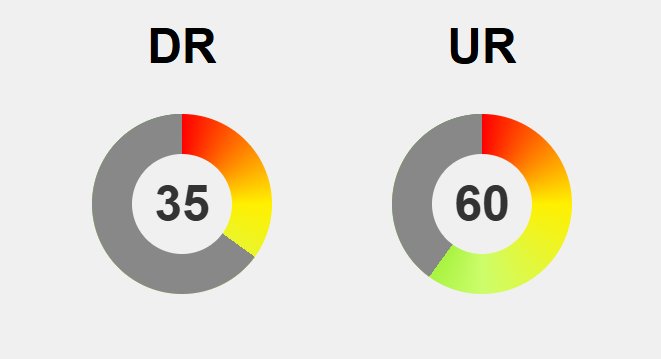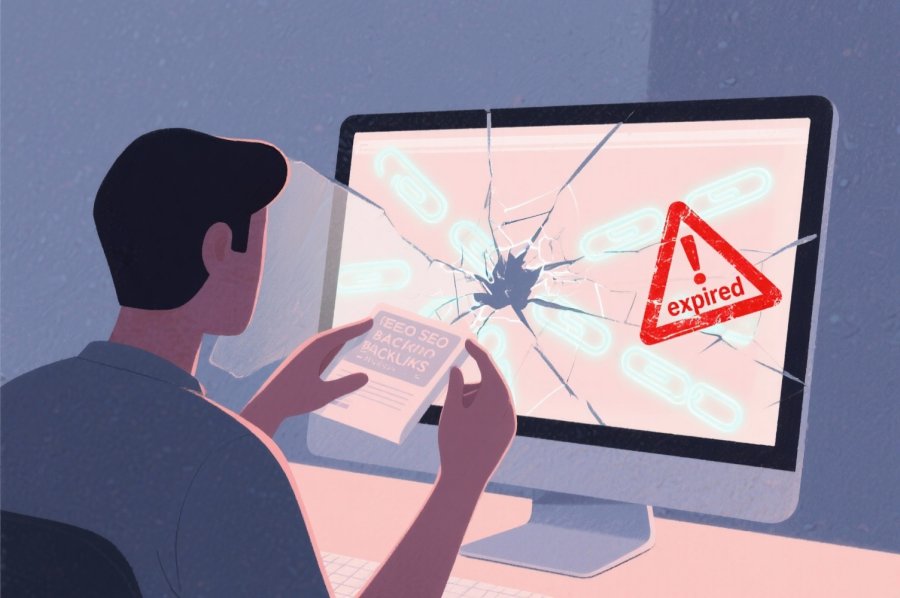Imagine answering a call, trusting that the displayed number is genuine—only to realize it’s been manipulated. Call ID spoofing tricks your phone into revealing a false identity, blurring the line between security and deception. While legitimate entities sometimes use similar tactics, scammers exploit this technology to deceive, commit fraud, or steal identities. Using sophisticated software and exploiting vulnerabilities in VoIP systems, these cyber tricksters can easily falsify caller information, making it increasingly difficult to distinguish real from fake calls. The risks are profound: financial losses, emotional distress, and erosion of trust in communication channels. As scammers grow more convincing, how can you stay protected? Vigilance, verification through trusted channels, and technological safeguards are essential tools. With deception evolving rapidly, understanding caller ID spoofing becomes critical—because in a world where trust can be manufactured, awareness is your strongest defense.
Unveiling the Deceptive World of Caller ID Spoofing
Imagine answering your phone and seeing a familiar number pop up—perhaps your bank, a government agency, or a trusted business. It feels reassuring, almost like a quick shortcut to trust. That’s because caller ID was designed to help us identify who’s calling, making communication smoother and safer. But what if that information isn’t always accurate? That’s where caller ID spoofing comes into play—a digital trick that manipulates what your phone displays before you even pick up.
Caller ID spoofing involves altering the data sent during a call’s setup, so the number and name you see aren’t necessarily genuine. Malicious actors use this technique to make their calls appear as if they’re coming from someone trustworthy, like a local business or official organization. It’s a sneaky way to build false trust quickly, often with harmful intent, such as scams, fraud, or identity theft. While legitimate entities sometimes use similar methods for verification, scammers exploit this technology to deceive and manipulate.
As digital communication expands, so do the methods scammers employ to spoof caller IDs. They leverage specialized software and online tools that make it surprisingly easy to falsify caller information. Many of these tools work seamlessly over VoIP systems—voice calls over the internet—which are more vulnerable than traditional landlines. By hacking into or exploiting weaknesses in these systems, scammers can generate countless fake calls that look authentic, blurring the line between real and fake communication.
Understanding why caller ID spoofing matters is crucial because it exposes how fragile our trust in phone calls can be. Fake calls that mimic trusted numbers can lead to serious consequences—financial losses, data breaches, or emotional distress. The growing prevalence of these deceptive calls has eroded a basic sense of security for many users. Recognizing the mechanics behind caller ID spoofing helps us stay alert and better prepared to spot and avoid falling victim to these digital masquerades.
Knowing what’s at stake underscores the importance of vigilance. As scammers continue to refine their techniques, staying informed is your best defense. Whether it’s being cautious about unsolicited calls, verifying identities through independent channels, or using call-blocking tools, awareness can make a real difference. Caller ID spoofing isn’t just a minor annoyance; it’s a serious threat that requires us to stay one step ahead in this digital age.
How Hackers Falsify Incoming Calls with Advanced Tools
Caller ID spoofing works by tampering with the signals used to initiate a call. When you dial out, your phone sends information about the number and sometimes the caller’s name through the network to the recipient’s device. Spoofing tools and software intercept this data during the call setup and insert false information before it reaches your phone. As a result, the displayed caller ID can be entirely fabricated, making it seem as if the call is coming from a trusted source or a familiar number.
Many of these spoofing tools are readily available online or through specialized applications. They allow a caller to input any number they choose, effectively “faking” their caller ID. When the call connects, the false data is transmitted through the network and appears on your device as genuine. This manipulation is often seamless, making it difficult to distinguish a spoofed call from a legitimate one without extra verification steps.
A common method scammers exploit involves Voice over Internet Protocol (VoIP) systems—technology that transmits calls over the internet rather than traditional phone lines. VoIP systems are inherently more vulnerable because they often lack strict verification protocols. Scammers hack into or manipulate these systems, enabling them to falsify caller information with relative ease and speed. This vulnerability allows them to launch large-scale campaigns of spoofed calls, often automated, that flood networks with convincing but fake caller IDs.
Spoofing tools typically operate by intercepting the signaling data—the information used to establish the connection—before it reaches the recipient. They insert false caller ID data into this process, so the recipient’s device receives a distorted version of the caller’s identity. Because this occurs at a fundamental level, the falsified information appears legitimate, and the recipient only sees the manipulated caller ID. Some scammers also use software that automatically randomizes or fakes caller IDs across multiple calls, increasing their reach and success rate.
As technology advances, scammers continue developing more convincing methods to make spoofed calls appear authentic. They mimic local area codes, use AI-driven voice synthesis to impersonate voices, and adopt more sophisticated tactics to evade detection. This ongoing evolution makes it harder for users to spot fake calls, emphasizing the importance of understanding the technical methods behind caller ID spoofing. Recognizing these mechanisms helps users stay alert and better equipped to identify and avoid falling prey to these digital deceptions.
The Hidden Dangers: Scams and Trust Erosion
Caller ID spoofing isn’t just an annoyance; it carries serious risks that can affect anyone. Scammers often craft fake caller IDs that mimic trusted organizations—like banks, government agencies, or local businesses—to manipulate victims into revealing personal details or making payments. Because the caller appears legitimate, many people respond quickly and without suspicion, which can lead to financial loss, emotional distress, or even identity theft.
Beyond individual harm, spoofing erodes the trust we place in our phone calls. When fake calls become widespread, answering unknown numbers feels increasingly risky, causing people to ignore or screen calls from unfamiliar sources. This skepticism can prevent important messages—like emergency alerts or legitimate business communications—from reaching their recipients, undermining effective communication overall.
The scale of this problem is staggering. Studies estimate that over half of scam calls now involve some form of caller ID manipulation. Financially, billions are lost annually due to phone scams that rely on spoofed numbers. Criminal networks exploit these techniques in automated campaigns targeting thousands of victims at once, making the threats more pervasive and harder to detect. Many users are unaware of how convincingly their trust can be exploited, leaving them vulnerable to scams they might otherwise recognize.
Impersonation through spoofing also threatens organizational security. Criminals pose as company executives or official authorities to manipulate employees into revealing confidential information or granting unauthorized access. These breaches can lead to data theft, fraud, or broader security compromises, affecting both individuals and institutions on a larger scale. The ripple effects can include financial damage, reputational harm, and compromised sensitive data.
Countering these risks isn’t straightforward. As scammers refine their tactics—mimicking local numbers or impersonating trusted entities—the ability to identify fakes diminishes. While technological solutions like call authentication protocols are improving, they aren’t infallible. Awareness and skepticism remain crucial tools. Recognizing warning signs—such as urgent requests for personal info or unusual caller behavior—and verifying identities through independent channels can prevent falling victim.
The emotional toll of these scams is often overlooked. Victims may experience feelings of betrayal, embarrassment, or frustration after realizing they were deceived. This can lead to a loss of confidence in communication channels and a heightened sense of vulnerability. The psychological impact underscores how deeply these digital deceptions can affect personal well-being.
In the end, caller ID spoofing exemplifies the evolving nature of cyber threats. It highlights the importance of vigilance in a landscape where trust can be manufactured and manipulated. Staying informed, questioning suspicious calls, and adopting protective measures are vital steps to defend against these deception tactics. Recognizing the real-world consequences of spoofing encourages a proactive mindset—one that seeks to safeguard both personal and organizational security in an increasingly deceptive digital world.
To further protect yourself from these deceptive practices, consider exploring tools and resources that help verify caller identities. Learning more about how to identify legitimate calls can significantly reduce your risk of falling victim. For additional guidance on safeguarding your communications, you can visit this resource on call authentication.
Defensive Strategies to Thwart Spoofed Calls
To protect yourself from caller ID spoofing, start by approaching unfamiliar numbers with caution. If a caller pushes for quick decisions or asks for sensitive information, don’t rush. Take a moment to verify their identity before responding. Hang up and contact the organization directly using a trusted, known phone number—this simple step can often prevent falling for scams that rely on impersonation.
Using call-blocking apps or services adds an extra layer of defense. Many smartphones now include built-in spam filters that flag suspicious numbers based on user reports. Carriers also offer tools to authenticate calls and block fakes. Features like STIR/SHAKEN protocols are designed to verify whether a call is legitimate, making it harder for scammers to succeed. Setting up these protections can significantly cut down on the number of spoofed and scam calls reaching you.
Stay alert to common scam tactics. Scammers often use high-pressure language, urgent requests, or claim to be authorities to manipulate responses. Recognizing these red flags and resisting immediate action gives you time to verify. If you get an unexpected call asking for money, personal details, or access to your devices, pause. Call back through official channels or contact the organization directly to confirm legitimacy.
Keeping your device’s software and security apps up to date is crucial. Developers regularly release patches that address vulnerabilities and improve call verification methods. Running the latest updates ensures you benefit from the newest protections against spoofing techniques. Combining these updates with cautious habits makes it much harder for scammers to fool you with fake caller IDs.
Educate yourself about current scam tactics. Many cybersecurity organizations provide alerts and tips on how to spot suspicious calls. Being aware of common signs—like unusual caller IDs, pressure to act quickly, or requests for sensitive information—helps you stay ahead. Staying informed means you’re less likely to be caught off guard by increasingly sophisticated spoofing methods.
Trust your instincts. If a call feels suspicious, don’t hesitate to hang up and verify through independent means. Never share personal or financial information unless you’re certain of the caller’s identity. Taking the extra moment to confirm can save you from significant financial or emotional harm.
Finally, cultivate a healthy skepticism about unexpected calls. Even if the caller ID looks familiar or official, remember that it can be faked. Whenever in doubt, verify through official websites or known contacts. Being cautious and verifying details before responding is your best defense against digital masquerades and phone scams.
Staying One Step Ahead in a Constantly Evolving Threat Landscape
As technology continues to evolve, scammers are finding increasingly sophisticated ways to make caller ID spoofing more convincing. They now mimic local numbers more accurately and impersonate trusted organizations with greater detail, making it harder for everyday users to distinguish genuine calls from malicious fakes. While protocols like STIR/Shaken are gaining wider adoption and do improve verification processes, they are not foolproof. Scammers adapt quickly, constantly refining their methods to bypass new security measures. This ongoing arms race underscores the need for vigilance in protecting ourselves.
Staying alert is your strongest defense. Recognizing red flags—such as unexpected requests for personal information, high-pressure tactics, or suspicious caller IDs—can help you spot fake calls early. Verifying identities through independent channels, like calling back official numbers or using trusted contact methods, provides an extra layer of security. These simple habits can significantly reduce your chances of falling victim to digital deception, even as scammers grow more convincing.
The fight against caller ID spoofing involves a collective effort. Governments, telecom providers, and cybersecurity organizations are working to develop better detection systems and enforce stricter security standards. Public education plays a crucial role, empowering individuals to recognize scams and respond appropriately. As new technologies emerge, these partnerships and awareness campaigns will be essential in safeguarding the integrity of our communication systems.
Despite technological advances, no system can eliminate spoofing entirely. Cybercriminals are quick to find ways around new defenses, making personal vigilance vital. Trusting your instincts and questioning suspicious calls—especially those demanding urgent action or sensitive information—can prevent significant harm. Taking a moment to verify details through official channels remains one of the most effective ways to stay safe.
Looking ahead, the focus should be on improving both technological safeguards and public awareness. Enhancing caller authentication methods and increasing transparency about scam tactics will help curb the success of spoofing. Educating users about red flags and best practices ensures they are better equipped to navigate this deceptive landscape. Balancing security enhancements with user-friendly tools will be key to maintaining trust and safety in our digital communications.
Ultimately, caller ID spoofing highlights how deception adapts to technological progress. No matter how convincing a call seems, a healthy dose of skepticism and verification can save you from serious trouble. Staying informed and cautious isn’t just advisable; it’s essential in an environment where trust can be manufactured and manipulated. As scammers evolve, so must our defenses—combining technological innovation with vigilant habits to protect ourselves and our communities.
Recognizing the broader picture, the ongoing challenge of spoofing underscores the importance of collective responsibility. Governments, industry players, and individuals all have roles in creating a safer communication landscape. Continued innovation, combined with widespread education, will be vital in reducing the success of these scams. Building a more resilient system depends on our ability to stay a step ahead of increasingly clever deception tactics.
In the end, caller ID spoofing serves as a reminder that vigilance remains our best tool. No system is completely secure, but by staying informed, questioning suspicious calls, and leveraging available protections, we can significantly mitigate risks. Maintaining a cautious mindset and verifying identities through trusted sources will help us navigate the digital world more safely. Awareness and proactive behavior are our strongest defenses against the persistent threat of digital masquerades.






